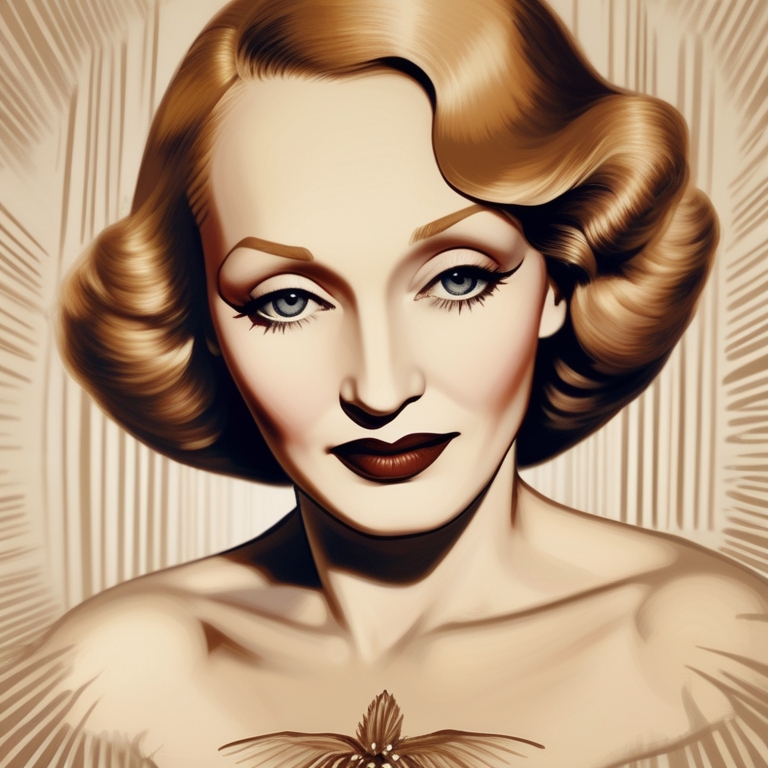
Introduction:
Marlene Dietrich, a name that evokes images of sultry glamour and timeless beauty, is an iconic figure in the history of cinema. In this article, we will delve into the background and origin of this enigmatic star, exploring her early life, family, and the influences that shaped her journey to becoming a Hollywood legend.
Background and Origin:
Early Life in Schöneberg, Berlin:
Marie Magdalene Dietrich, known as Marlene, was born on December 27, 1901, in Schöneberg, a district of Berlin, Germany. She was the daughter of Louis Erich Otto Dietrich, a police officer, and Wilhelmina Elisabeth Josephine Felsing. Marlene’s early life in Berlin exposed her to the rich culture and vibrant nightlife of the city, which would later influence her career.
Early Passion for Performing:
Marlene Dietrich developed a passion for performing at an early age. She studied violin and piano, but her true calling was the stage. She began her acting career in the theater, initially performing in small roles.
Rise to Stardom:
Marlene’s breakthrough came when she was discovered by director Josef von Sternberg, who cast her in the film “The Blue Angel” (1930). Her performance as the seductive cabaret singer Lola Lola catapulted her to international stardom. She soon moved to Hollywood and became one of the most sought-after actresses of her time.
Pioneering Fashion and Style:
Marlene Dietrich was not only celebrated for her acting but also for her distinctive fashion sense. She popularized androgynous fashion, wearing tuxedos and suits long before it was considered fashionable for women. Her daring style continues to influence fashion today.
Personal Life and Relationships
Marlene Dietrich was known for her alluring persona both on and off the screen. She married Rudolf Sieber, a film production assistant, in 1923 and had a daughter, Maria. While Dietrich remained married to Sieber until his death, she had numerous high-profile relationships and was a celebrated icon in the LGBTQ+ community for her defiance of traditional gender norms and her rumored relationships with both men and women.
Defining Characteristics and Personality
Dietrich was renowned for her distinctive voice, glamorous style, and androgynous fashion choices, often seen wearing trousers at a time when it was unconventional for women. Her on-screen persona was characterized by a mix of aloof coolness and magnetic allure. Off-screen, she was known for her strong will, keen intelligence, and humanitarian efforts during World War II.
Life Story and Milestones
Dietrich’s career began in the Berliner theater scene and silent films. Her breakthrough came with “The Blue Angel” (1930), which established her as an international star. Following this, she moved to Hollywood, where she made a series of successful films, including “Morocco” (1930) and “Shanghai Express” (1932). During WWII, Dietrich was a notable anti-Nazi activist, and she performed for Allied troops, an effort for which she was awarded the Medal of Freedom.
Achievements and Impact
Marlene Dietrich is remembered as one of the most iconic figures in cinematic history. Her films are celebrated for their artistic merit and for breaking new ground in the portrayal of women. Dietrich’s style and persona challenged gender norms and made her a timeless icon of glamour and progressive femininity. Her contributions during WWII showcased her commitment to humanitarian and political causes.
Conclusion
Marlene Dietrich’s legacy is a blend of artistic brilliance, bold personal choices, and a commitment to humanitarian causes. Her journey from Berlin to Hollywood marked her as a symbol of the golden era of cinema and a trailblazer for future generations. Dietrich’s life is a testament to the power of staying true to oneself, breaking barriers, and leaving an indelible mark on the world.